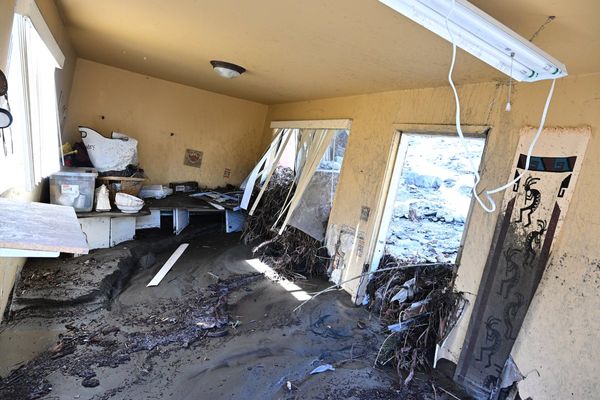For most kids visiting Nanny and Poppy means going to a brick house in the suburbs, getting treats from a lolly jar and watching cartoons.
For my sister and I, it is about going to the zoo.
My grandparents, Richard and Maureen Tindale, started building the National Zoo and Aquarium two years after I was born.
A train trip around Africa inspired their love for wild cats, and they built the zoo with the goal of supporting conservation.


Poppy had retired young, having been a successful real estate agent and property developer.
He went into real estate after failing to get a cadetship at The Canberra Times. It only took fifty years, but I finally redeemed the family name!
The couple have six children from separate marriages, and my dad is Poppy's eldest child.
All I remember, Nanny and Poppy were the zoo, and the zoo was them.

Poppy is always in his frumpy uniform, radio and keys hanging off his waist. Meanwhile, Nanny is immaculate in a leopard or zebra-printed top.
Everything from the photos on the walls to the crockery is African-animal themed.
For a while, my sister and I stayed at the house within the zoo, which is now part of the hotel, Jamala Wildlife Lodge.
We would fight over a king-size bed in a room now known as the Reef Room - we knew it as Aunty Sharon's room (for some reason she was never there!).

At night I could hear the low hum of the fish tank in the corner of the room, and occasionally a lion's roar.
I took it for granted then, and my strongest memory of those days was my Aunty Mandy making us fairy bread sandwiches for lunch - very exotic food you won't find at the hotel anymore.
My sister and I would sometimes feed the lions. The animals would purr and salivate as we poked slabs of meat through the grates with tongs.
Sometimes Aunty Shelley would chop up grapes for us to feed the sun bears, or we would slather our hands with honey for the rescued former circus bears to lick off.








We'd visit capuchin monkey Sushi, who my dad hand-raised.
Our WIRES wallabies ended up in the natives' area, while we took home a Shetland pony and two emus, including the amorous Moo. (Even at the ripe old age of 31, he tried to mate with photographer Sitthixay last Friday).
One year my sister and I spent Christmas Day at the zoo - the only day each year it is closed.
The animals still had to eat, so I helped Aunty Shelley feed the penguins slimy fish, their little wings flapping excitedly.

There are tears whenever a beloved animal passes, especially the former circus rescues or old timers like Winnie the wombat.
The zoo is a family business, and Nanny and Poppy still live on the grounds.
We have all worked there at some point, sometimes in jobs that probably wouldn't exist if we didn't.
Anytime I visit, the discussion is about the zoo, and the pair are involved in all details, big to small.
The last time I went over for dinner, they were brainstorming a slogan for the 25th anniversary, which is this month.

It's hard to believe it has been around for almost the same amount of time as me, surviving bushfires, the pandemic, many expansions, and winning countless tourism awards along the way.
Jamala has been a financial breakthrough, funding the zoo and many charity projects.
The entire idea of the zoo is to inspire conservation efforts, and educate the public about the natural world.
With climate change and human interference threatening to destroy so many amazing species and their habitats, there is still a lot of work to be done.
We've made it a whole lot easier for you to have your say. Our new comment platform requires only one log-in to access articles and to join the discussion on The Canberra Times website. Find out how to register so you can enjoy civil, friendly and engaging discussions. See our moderation policy here.







